Garden layout plays a vital role in how successful and enjoyable your raised bed garden will be. Whether you’re planting for beauty, food, or both, the way you organize your beds can impact everything from sunlight exposure to ease of access. With the right garden layout, you can maximize your space, streamline your maintenance, and create a backyard space that’s both functional and inviting. In this guide, we’ll explore five of the best raised bed garden layouts—plus how to choose the one that fits your space, goals, and lifestyle.
Table of Contents
The 5 Most Functional Raised Bed Garden Layouts
Raised bed gardens aren’t just practical — they can also be designed to fit beautifully into any space. Whether you’re working with a narrow side yard or a large open plot, choosing the right garden layout will help you grow more efficiently and enjoy your garden more often. Below are five raised bed designs that work well in different settings.
1. Linear Row Layout
The simplest garden layout starts with raised beds arranged in a straight line. This setup is ideal for small or narrow spaces like side yards or driveway edges. It creates a clean, streamlined look and allows for easy watering, weeding, and harvesting.
Keep pathways at least 2–3 feet wide between beds to ensure you can move freely with tools or a wheelbarrow. Linear layouts also pair well with vertical trellises at the ends for crops like tomatoes, beans, or cucumbers.
If you’re working with limited width but decent length, this is your most space-efficient option.
2. Symmetrical Twin Beds
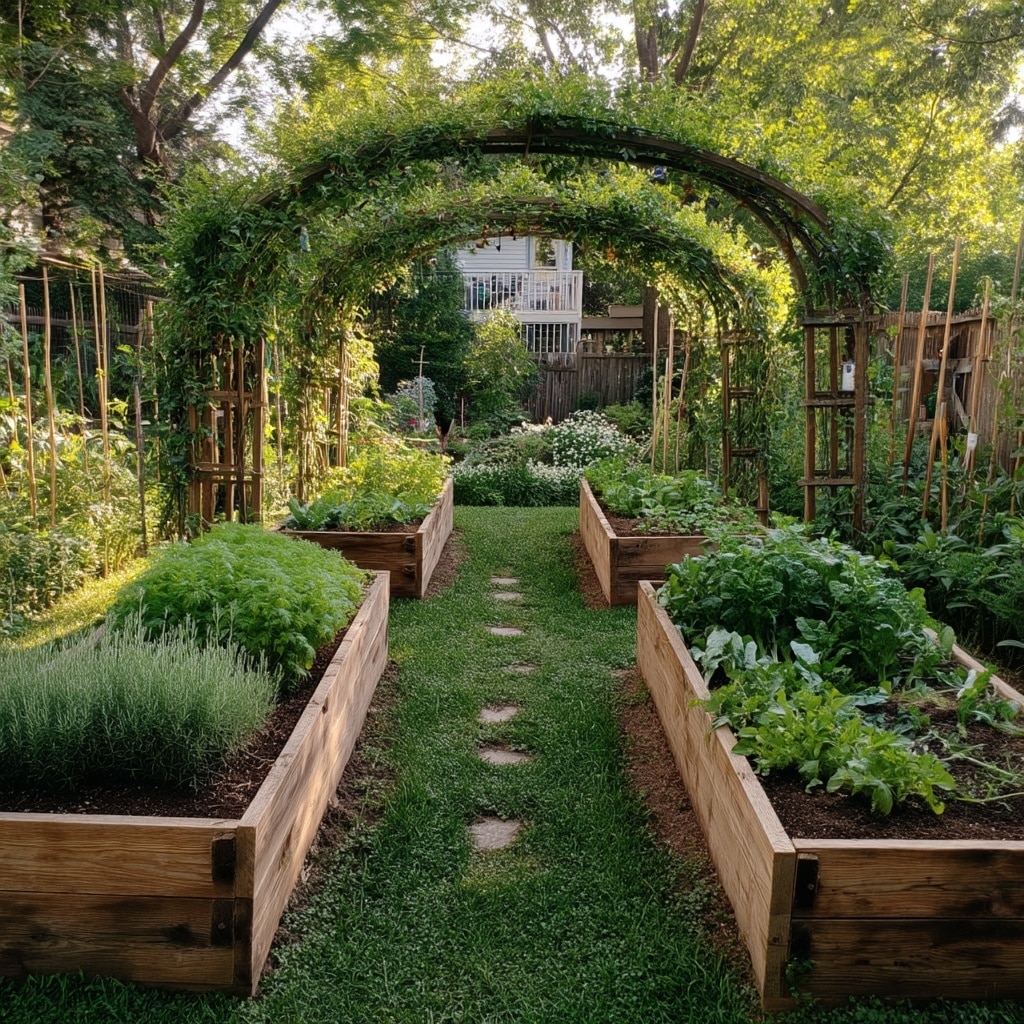
A twin bed garden layout offers a balanced, beautiful way to organize your growing space. This setup features two identical raised beds positioned side by side, typically with a central path wide enough for walking and working comfortably.
The visual symmetry is not just pleasing — it’s practical too. Many gardeners plant mirrored crops in each bed, alternating rows of vegetables and flowers to promote diversity and help minimize the risk of disease or pest build-up.
For added charm, place a trellis or archway between the beds to create a “green tunnel” effect. This layout works especially well in front yards, patios, or any visible garden space where aesthetics matter as much as production.
3. Trio Formation
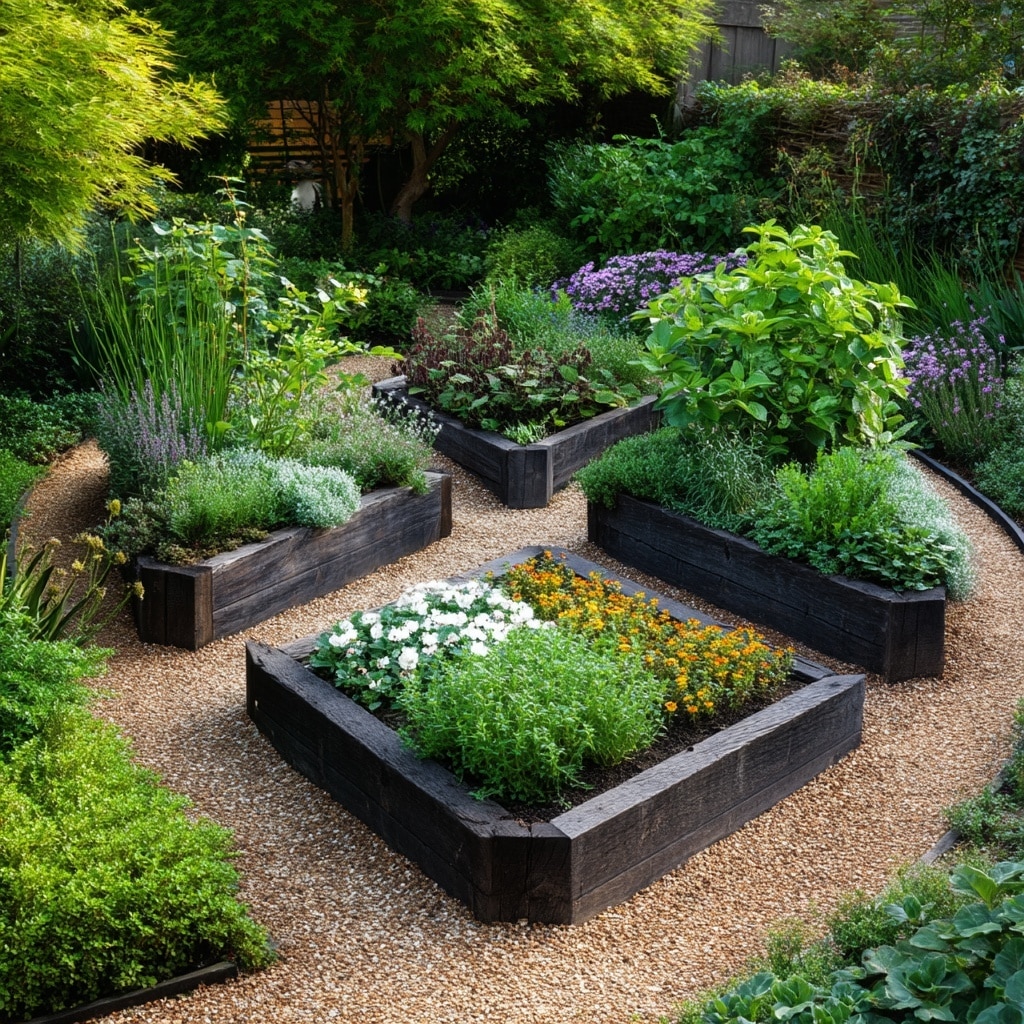
If you have a rounded corner, courtyard edge, or an oddly shaped patch of yard, a trio formation is a flexible garden layout that offers both balance and beauty. This design uses three raised beds arranged in a triangular or curved pattern, which fits nicely into non-linear spaces.
The visual grouping is pleasing to the eye and offers plenty of planting versatility. Many gardeners choose to match the outer two beds and dedicate the center one to specialty crops like cutting flowers, culinary herbs, or pollinator favorites.
You can add matching trellises to all three beds for vertical interest and to help define the space. Trio formations work especially well for those who want to create a focal point in their garden while keeping the flow natural and open.
4. Central Courtyard Design
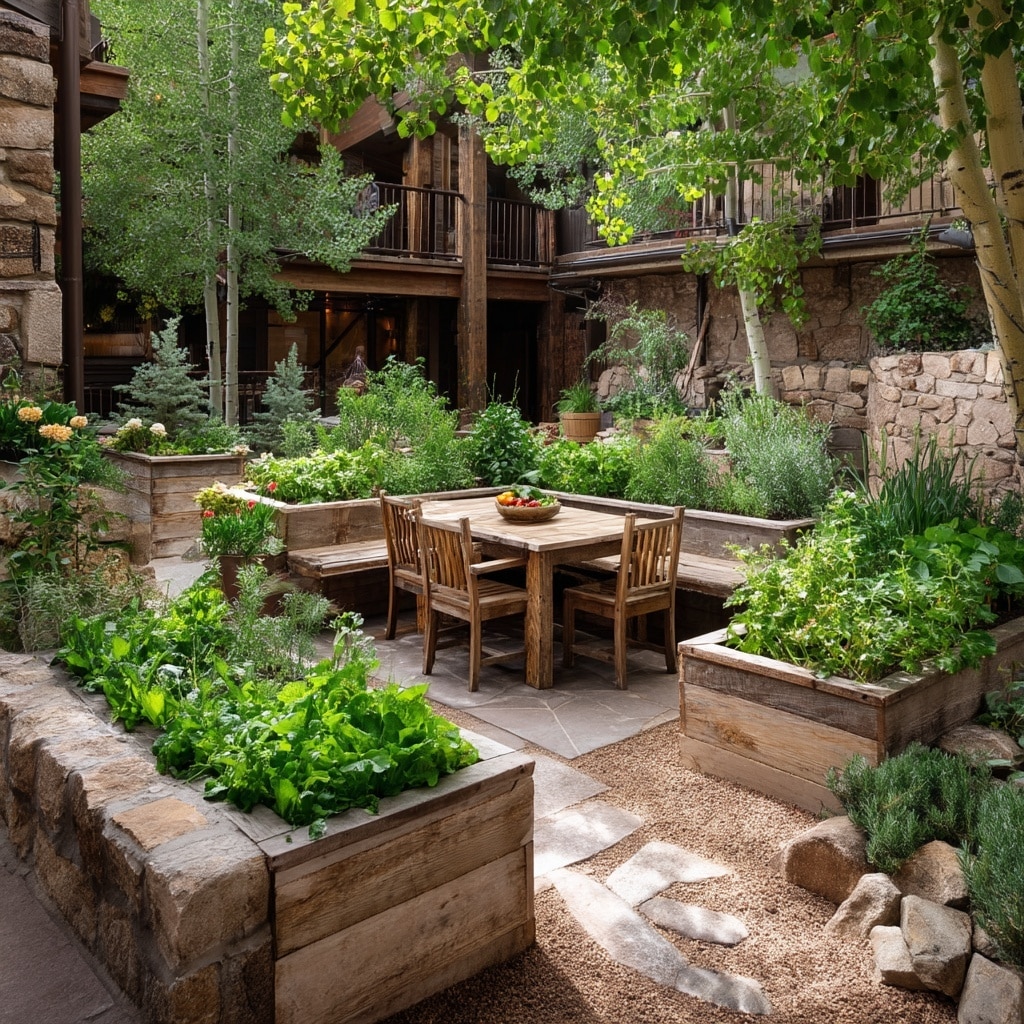
For those who love gathering outdoors, a courtyard-style garden layout brings both beauty and community to your growing space. This design surrounds a central feature — like a patio, fountain, or seating area — with raised beds arranged in a square or circular fashion.
It creates an immersive garden experience, drawing people into the space while keeping plants within arm’s reach. Since beds can be accessed from multiple sides, you can make them slightly wider (up to 4–5 feet) without sacrificing usability.
This layout works well in medium to large yards and is ideal for blending food, flowers, and function. You’ll enjoy a true “garden-to-table” feeling every time you step outside.
5. Four-Bed Square Grid

If you have the space and want your garden to feel intentional and structured, the four-bed square grid is a standout garden layout. This classic design features four evenly sized raised beds arranged in a square, often with pathways in between forming a cross or “plus” shape.
It’s highly efficient for crop rotation and companion planting, and the layout naturally creates separate zones for herbs, vegetables, and flowers. Many gardeners add arched trellises connecting opposite beds, forming a grand entrance and creating vertical space for climbing plants.
This layout offers a sense of enclosure and purpose — perfect if you want your garden to feel like a destination rather than just an afterthought in the yard.
How to Choose the Right Garden Layout for Your Yard
Choosing the best garden layout depends on more than just aesthetics. Your site’s conditions and your personal gardening goals should guide how you design your raised bed setup. Here are the top considerations to help you make the right choice:
Sunlight Is Non-Negotiable

Most vegetables and flowering plants need 6–8 hours of full sun daily to thrive. Before selecting a layout, observe your yard’s sunlight patterns throughout the day.
- South-facing areas get the most consistent light.
- Shadier corners are better for greens like lettuce, kale, or herbs.
If part of a bed will be shaded by a fence, wall, or tree, plan accordingly and reserve that section for shade-tolerant crops.
Soil and Drainage Conditions
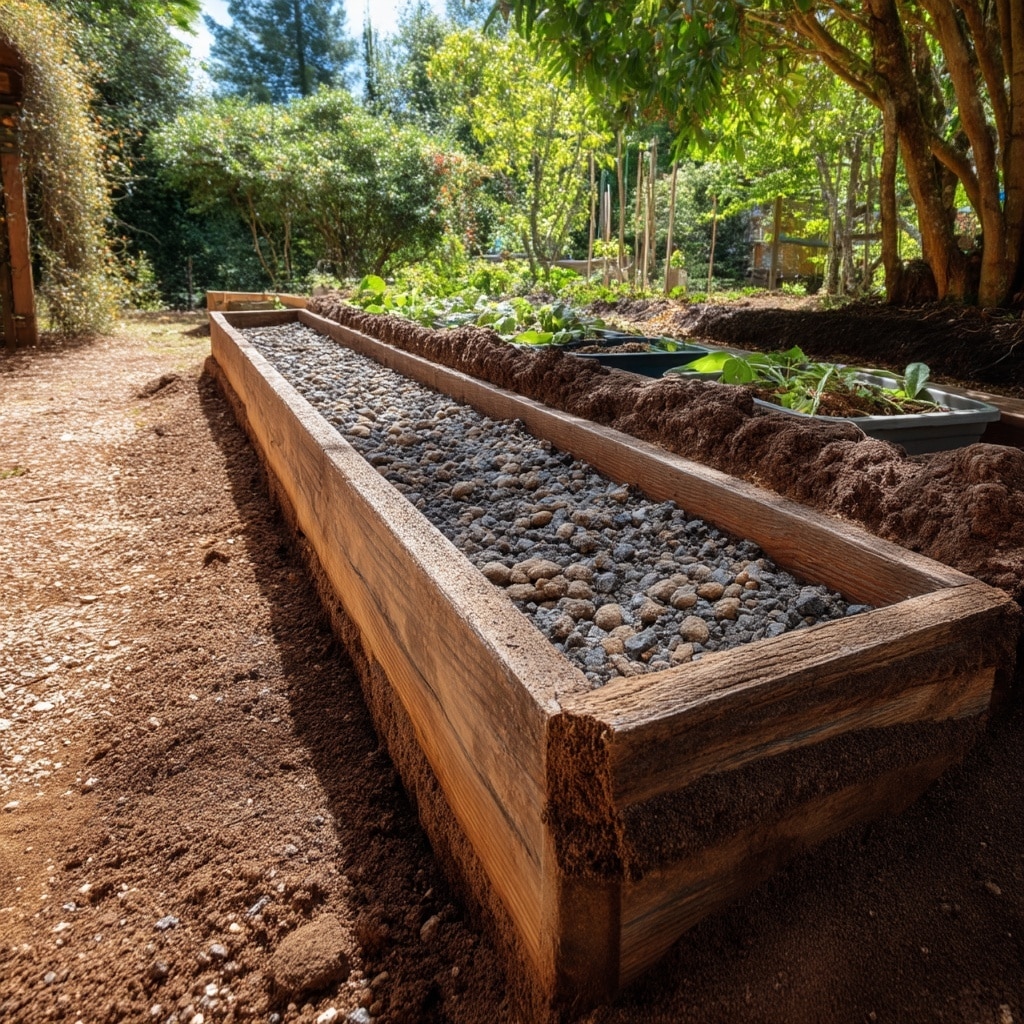
One benefit of raised beds is controlling soil quality, but your existing ground still matters. Avoid placing beds in low-lying spots that stay soggy after rain.
- If your yard has heavy clay soil, opt for deeper beds (12–24 inches) with well-draining soil mix.
- For sandy or loose native soil, standard-height beds (8–12 inches) will usually suffice.
Pathways and Accessibility
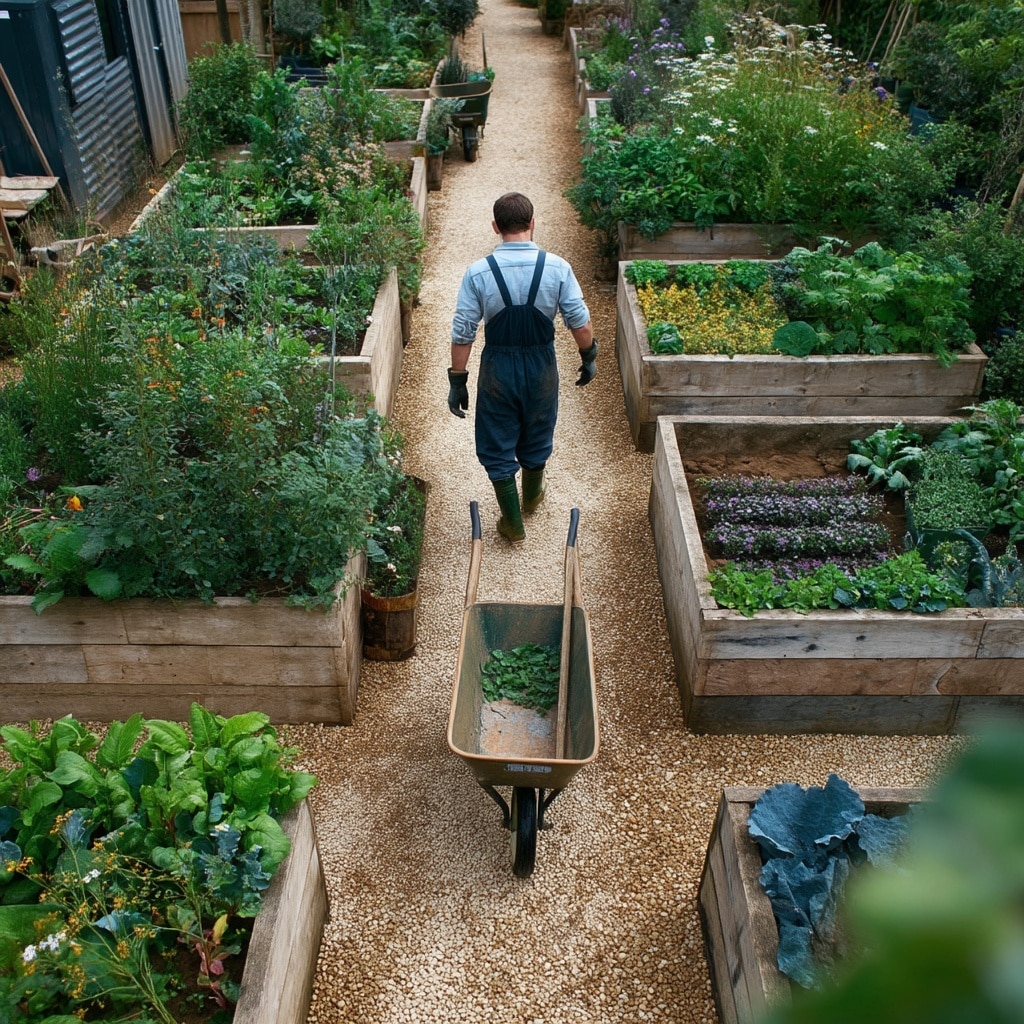
Functionality is key. Be sure to leave enough room between beds to comfortably walk, weed, and harvest.
- Ideal path width: at least 3 feet for wheelbarrows or easy movement
- Minimum side access: 18–24 inches if working space is limited
- Bed width: no more than 3 feet if accessed from one side; up to 4 feet if reachable from both
If bending is difficult, consider bed heights of 24 inches or more to reduce strain on your back and knees.
Planning and Mocking Up Your Garden Layout

Before committing to a permanent garden layout, it’s wise to test your ideas in the actual space. What looks good on paper might feel cramped or awkward in real life. Taking the time to plan can help you avoid layout regrets and make your garden more enjoyable to use.
Start with a Rough Sketch
Begin with a simple pencil drawing of your yard or use graph paper to map it out to scale. Mark out areas that get full sun, partial shade, and deep shade. Include permanent structures like fences, trees, patios, and walkways so you can visualize how your beds will fit around them.
Use Google Maps or Aerial Views
For a broader perspective, use a satellite view of your property from Google Maps to assess your space. Print it out and draw directly over it to brainstorm different layout ideas. This is especially helpful for irregularly shaped yards.
Mock It Up Physically
Before building anything, simulate your raised bed layout with string, stakes, cardboard, or even folded bed sheets. This lets you walk through the space, assess visibility, and get a feel for how it flows.
- Use bedsheets cut to bed size and lay them on the ground
- Try walking around with garden tools or a wheelbarrow
- Adjust spacing before making anything permanent
Testing your design in real space makes a big difference — especially for first-time gardeners working with raised beds.
Conclusion
Choosing the right garden layout isn’t just about how it looks — it’s about how it works for you. Whether you’re working with a narrow strip of sun or a spacious backyard, a thoughtful raised bed design can improve your harvest, simplify maintenance, and make gardening more enjoyable.
Start small if you’re new, or go bold if you’re ready to turn your space into a thriving backyard sanctuary. With the right layout, your garden becomes more than just a place to grow — it becomes a place to live.




